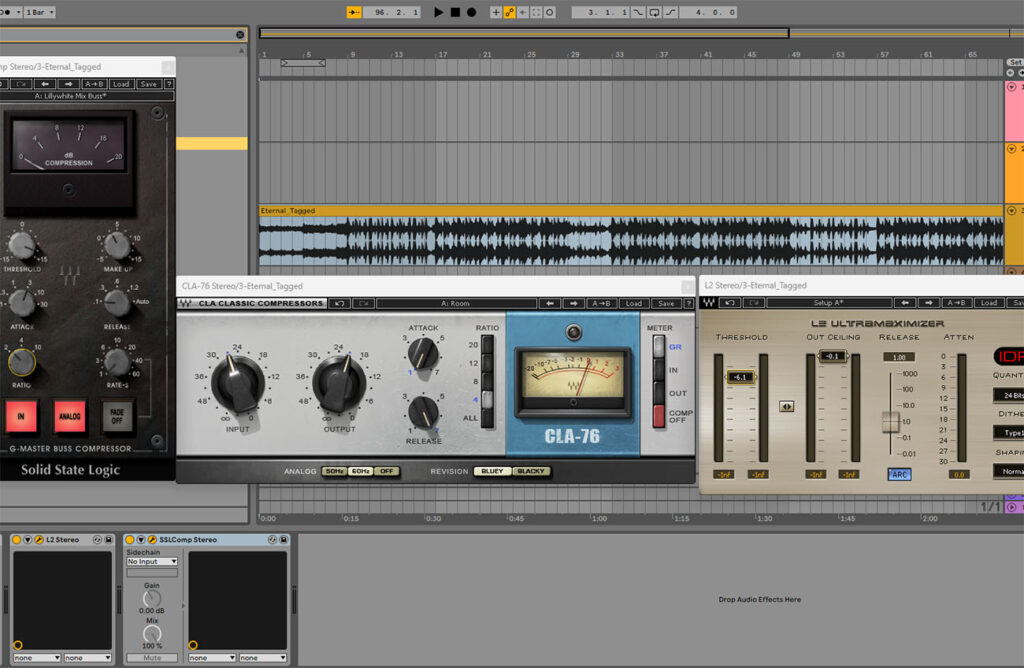"Remastered" or "remastering" refers to an audio processing technique that aims to improve the sound quality of a piece of music that has already been mastered. This technique can be applied either to older music productions that have been particularly affected by the aging process, or to newer recordings to improve their sound.
As a rule, this procedure is used for old pieces that were mastered analog on tape, so that they sound good and especially loud enough in today's digital audio world. The mix is not changed in the process - you work with the mixed, unmastered stereo file.
In contrast to mastering, remastering can be aimed at restoring the sound quality of a particularly damaged or poorly recorded track. In this case, it is called audio restoration.
Remastering can also refer to processes that improve the quality of an image or projects that modernize video game products to adapt them to modern resolutions and new devices.
History
With the advent of sound carriers such as vinyl records and audio cassettes, the production of large numbers of copies of an album required the establishment of particularly well-equipped and expensive recording studios. However, absolute fidelity could not be achieved with the equipment available from the 1950s onwards.
This was due to the sonic characteristics of the recording equipment, microphones, and tapes available at the time; many music recordings from the immediate post-war period sound poor today, with emphasized mids, poor dynamics, hiss, clicks, and other background noise. The mastering process itself was often non-existent, leaving this important task to the mixing engineer.
Remastering originated in 1988 as a way to restore and bring out the best possible sound quality from a destroyed, old, or poor source.
In recent years, this practice has been extended to newer productions to improve their already good sound quality, thanks to the use of modern, often digital techniques that were not available at the time of the album's release.

Sometimes, however, a song/album is simply remastered because the artist has decided, after some time, that he no longer likes the mix/master of his record/song and really wants a new version.
Remastering is also often applied to the soundtracks of older films to improve dialogue or music reproduction, or to bring them up to multi-channel standards for home theaters.
Remastering techniques
Computer techniques and methods vary greatly depending on the source being processed. Old, worn and poor quality recordings are processed as follows:
- Removing pops, clicks, and noise (with a noise reduction plug-in)
- Suppression of noise and/or background noise (e.g. 50/60 Hz mains hum or motor noise from tape recorders) (with a noise reduction plugin or a noise gate)
- Suppression of sibilants in dialog or vocals (with the de-esser)
- EQing the track and looking for uniformity across all tracks on the album (using an equalizer).
- Dynamic expansion or compression (with compressors, limiter or noise gates).
- Finishing of the product according to the mastering guidelines (respecting the maximum level, bringing the song to a certain volume level).

We work on modern or recent recordings that are considered "needing to improve" in sound:
- EQing the track and looking for uniformity in all tracks of the album.
- Dynamic expansion or compression with new and often very expensive methods
- Completion of the product according to mastering guidelines
In the restoration of old tapes and records, remastering has produced true masterpieces, rejuvenating recordings up to half a century old through a truly artistic process of sound restoration. Examples include the recordings of German pianist Walter Gieseking, recently remastered by EMI Classics, and the mid-century interpretations of Maria Callas.
Remastering also involves converting the original medium to a 24-bit digital standard with sampling rates equal to or greater than those of the compact disc, as in the case of SACD or DVD-Audio. Conversion may also involve the transition from mono to (pseudo) stereo or from stereo to multichannel. An example of this is the remastering of Pink Floyd's The Dark Side of the Moon for CD and SACD.

By loading the video, you accept YouTube's privacy policy.
Learn more
However, you have to buy the Super Audio CD version to really hear the album in 5.1 - the version on Youtube was converted from 5.1 to stereo.
In other media
For video games, remastering usually means support for new, modern consoles and operating systems with improved and modernized graphics, video resolution, and user interface. It also includes support for various modern peripherals that may not have been available or supported at the time of the original release. Remastering also includes the audio-visual enhancement of the original game's sound and image.
Remastering problems
In audio, there is no standard that specifies "how loud a track should sound" or "how loud it should sound on average". However, there are streaming platforms that provide approximate loudness specifications. Read more in my article about LUFS, the standard for measuring loudness.
As a result, every mastering and remastering process results in a unique final product that depends on a number of factors:
- the format and quality of the original product
- the technologies used in the process
- the experience and personal taste of the sound engineer
Each track is unique and requires individual, analytical listening and different mastering settings.















